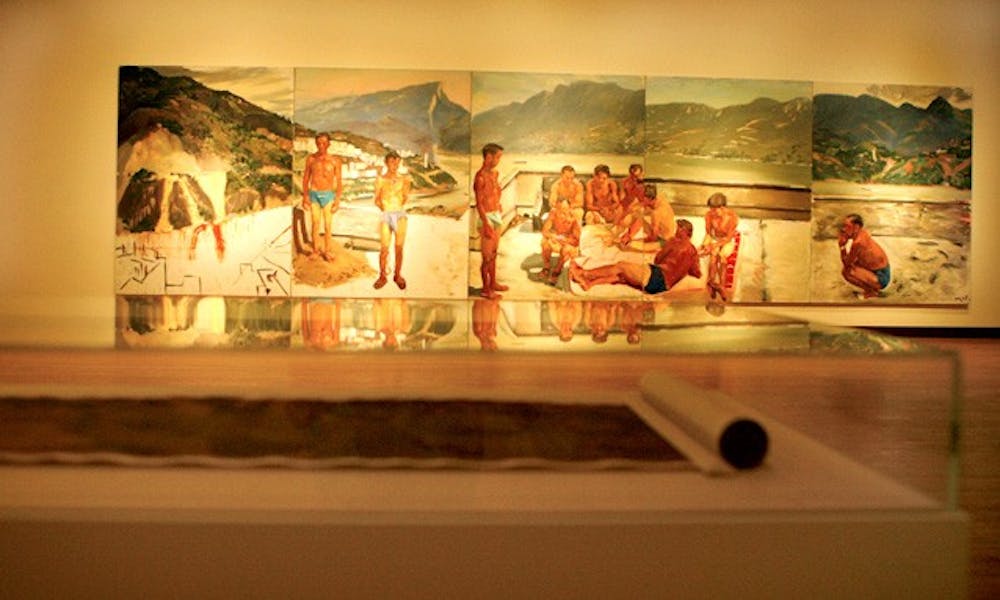The Three Gorges Dam is an epic feat of modern construction, a gargantuan dam made of millions of tons of concrete that spans China’s Yangtze River. Its recent completion displaced more than one million riverside residents—forcing them to move under the threat of flooding—and submerging a wealth of cultural history. This historic project provides the thematic and emotive inspiration for Displacement: The Three Gorges Dam and Contemporary Chinese Art, opening today at the Nasher Museum of Art.
The scope of the work on display is humble compared to its content: just four artists—Liu Xiaodong, Yun-fei Ji, Zhuang Hui and Chen Qiulin—are represented here.
Xiaodong’s work, “Hotbed,” is the most immediately impressive, a larger-than-life five-panel oil painting depicting actual dam laborers congregating on a rooftop; the river-and-mountain backdrop is painted differently in each panel, and the canvasses don’t quite align, perhaps suggesting the languorous passage of time it took for the workers to complete their opus.
Ji’s contribution, “Water Rising,” is a large ink scroll completed in traditional Chinese style—here, the folkloric retrograde of the piece, though somber, adds a sense of dignity and idealism to Displacement. In Ji’s landscape, local people flee from rising water, but there is no hint of the colossal man-made impetus behind the movement.
“Longitude 109.88°E” and “Latitude 31.09°N” are both the titles and coordinates of the location where Hui photographed a series of holes he had dug in the riverbed that is now submerged by the Yangtze. The multimedia project includes video accompaniment, and together conveys an even heavier, palpable sense of longing than the other works. The holes become immediate artifacts in the evolving landscape, and even if this purpose is ultimately apparent, the photographs confound the viewer more than the other exhibited pieces—for this reason it invites greater study and introspection and is the most moving representation in Displacement.
Still, the most dramatic offerings are renowned Chinese performance artist Qiulin’s video instillations: two concise, engaging documentary-cum-performance pieces. “River, River” intersperses sequences of traditional Chinese theater with rustic scenes of town and city surrounding the dam; two Chinese stage actors are shown frolicking in an industrial shipping yard, ironically embracing their new stage with aplomb. Better yet is “Colour Line,” an eerie piece capturing young children doing their best to bring color into the monochromatic palette of a decrepit building development. The video does much to capture the symbolism of valuing colorless manmade creations over a rich and vibrant Chinese heritage. Though both are man-made constructs, Qiulin contrasts the longevity of art and culture to crumbling edifices—even this dam will eventually come to ruins, it says.
Displacement is a highly narrative exhibition that combines past and present in a dignified way, without excessive moralizing. It is accessible despite the modern pedigree of its representative artists and partially due to its small scale, which is overcome by the magnitude of its grace.
Displacement opens today at the Nasher Museum of Art with a curator conversation at 7 p.m. The exhbition will be on display through July 25.
Get The Chronicle straight to your inbox
Signup for our weekly newsletter. Cancel at any time.

